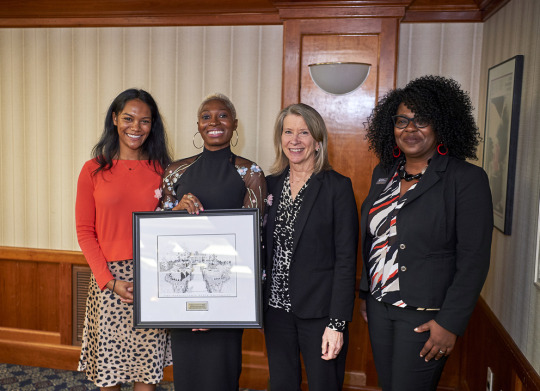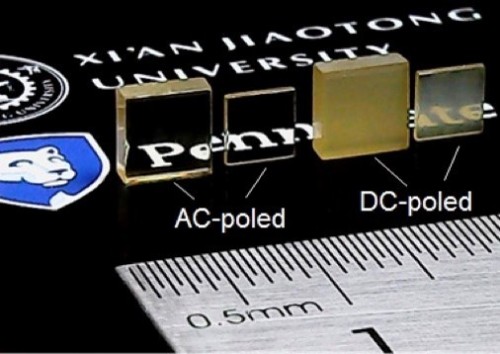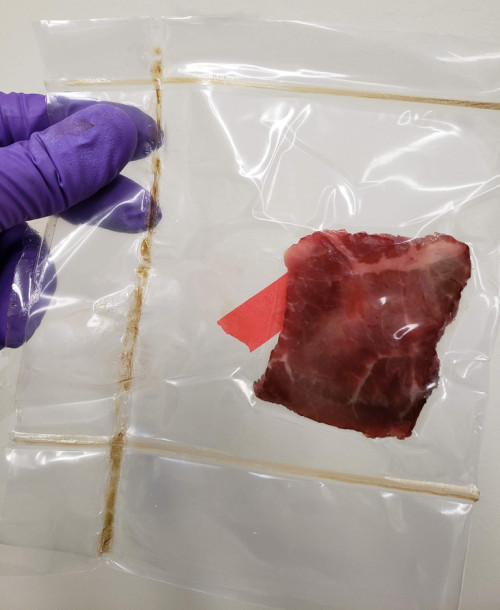#pennstate
Using straightforward chemistry and a mix-and-match, modular strategy, researchers have developed a simple approach that could produce over 65,000 different types of complex nanoparticles, each containing up to six different materials and eight segments, with interfaces that could be exploited in electrical or optical applications. These rod-shaped nanoparticles are about 55 nanometers long and 20 nanometers wide — by comparison a human hair is about 100,000 nanometers thick — and many are considered to be among the most complex ever made.
Learn more at Penn State News.
Post link
Transparency discovered in crystals with ultrahigh piezoelectricity
Use of an AC rather than a DC electric field can improve the piezoelectric response of a crystal. Now, an international team of researchers say that cycles of AC fields also make the internal crystal domains in some materials bigger and the crystal transparent.
“There have been reports that the use of AC fields could significantly improve the piezoelectric responses — for example by 20% to 40% — over DC fields and the improvements have always been attributed to the smaller internal ferroelectric domain sizes that resulted from the cycles of AC fields,” said Long-Qing Chen, Hamer Professor of Materials Science and Engineering, professor of engineering science and mechanics, and professor of mathematics at Penn State. “About three years ago, Dr. Fei Li, then a research associate at the Materials Research Institute at Penn State, largely confirmed the improvement of piezoelectric performances from application of AC fields. However, it was not clear at all how the internal ferroelectric domains evolved during AC cycles.
According to researchers, the work “presents a paradigm to achieve an unprecedented combination of properties and functionalities through ferroelectric domain engineering, and the new transparent ferroelectric crystals reported here are expected to open up a wide range of hybrid device applications, such as medical imaging, self-energy-harvesting touch screens and invisible robotic devices.”
Learn more about this research at Penn State News!
Post link

IMAGE: © iStock Photo / royaltystockphoto
An industrial chemical — phased out since 2002, but previously used in stain and water-repellent products and firefighting foam — alters the gut microbiome of mice and could have implications for human health, according to an international team of researchers.
Perfluorooctane sulfonate, or PFOS, persists in the environment and in the bodies of living organisms. While the U.S. Environmental Protection Agency designated PFOS a “contaminant of emerging concern” and its production was voluntarily ceased in the United States by producers, it is still detected in the blood of up to 99% of the U.S. population.
“We know that chronic exposure to some environmental chemicals, including persistent organic pollutants, can impact the gut microbiome, and we are actively assessing whether these interactions can impact health,” said Andrew Patterson, Tombros Early Career Professor and professor of molecular toxicology, Penn State. “Our study shows that PFOS alters the composition and function of the microbiome, which suggests that this chemical and perhaps related chemicals, have mechanisms of action outside our own cells. Exploring how chemicals impact the microbiome is an important and emerging area of study.”
Read more about this work at Penn State News!
Novel composite antimicrobial film could take a bite out of foodborne illnesses
A novel composite film — created by the bonding of an antimicrobial layer to conventional, clear polyethylene plastic typically used to vacuum-package foods such as meat and fish — could help to decrease foodborne illness outbreaks, according to researchers in Penn State’s College of Agricultural Sciences.
Raw beef (shown here), raw chicken breast and ready-to-eat turkey breast were inoculated with pathogens then vacuum packaged with the composite antimicrobial film, sealed and placed into refrigerated storage. The composite antimicrobial film significantly reduced foodborne pathogens on the experimentally inoculated surfaces of the raw and ready-to-eat muscle foods.

The novel composite antimicrobial film stopped pathogens from growing on this ready-to-eat turkey breast.
Learn more at Penn State News.
Post link
Researchers have discovered that neonicotinoid seed treatments are driving a dramatic increase in insecticide toxicity in U.S. agricultural landscapes, despite evidence that these treatments have little to no benefit in many crops.
During the past 20 years, insecticides applied to U.S. agricultural landscapes have become significantly more toxic — over 120-fold in some midwestern states — to honey bees when ingested, according to a team of researchers, who identified rising neonicotinoid seed treatments in corn and soy as the primary driver of this change. The study is the first to characterize the geographic patterns of insecticide toxicity to bees and reveal specific areas of the country where mitigation and conservation efforts could be focused.
According to Christina Grozinger, Distinguished Professor of Entomology and director of the Center for Pollinator Research, Penn State, this toxicity has increased during the same period in which widespread decline in populations of pollinators and other insects have been documented.
“Insecticides are important for managing insects that damage crops, but they can also affect other insect species, such as bees and other pollinators, in the surrounding landscape,” she said. “It is problematic that there is such a dramatic increase in the total insecticide toxicity at a time when there is also so much concern about declines in populations of pollinating insects, which also play a very critical role in agricultural production.”
You can read more about this work at Penn State News!
Post link

The High Altitude Water Cherenkov Observatory in Sierra Negra, Mexico.
The cosmic sources of nine high-energy gamma rays have been identified by members of the High-Altitude Water Cherenkov (HAWC) Gamma-Ray Observatory collaboration, that includes Penn State scientists. All of the sources identified produce gamma rays with energies over 56 trillion electron volts (TeV) and three emit gamma rays extending to 100 TeV and beyond, making these the highest-energy sources ever observed in our galaxy.
These sources constitute a new catalog that will help explain where the particles that produce high-energy gamma rays originate and how they are accelerated to such extreme velocities. It may also provide important insight into the origins of cosmic rays — high energy particles that rain down on Earth’s atmosphere and may cause electronic problems in satellites and other machinery.
Read more about this research at Penn State News!

Ever wondered why your flights always seem to be delayed? Research has just shown that one reason behind the delays is climate change. The change in climate is leading to constant changes in the summer jet stream, according to Michael Mann, director of the Penn State Earth System Science Center.
Read more about Mann’s research at Bloomberg.
“Severe weather has strong interactions with the ground, but we haven’t had the capability to study the coupling between the atmosphere and the solid Earth…With this new technology, we can utilize existing fiber-optics networks to clearly see how thunderstorm energy passed through campus.”
Penn State professor, Tieyuan Zhu and a team of researchers turned miles of cables under campus into virtual sensors capable of detecting seismic events caused by thunder echoes. This research can provide information on the Earth’s interior and the impact of other natural hazards.
Read more at Penn State News.
Post link

Penn State professor, Chao-Yang Wang, was recently named a fellow of the National Academy of Inventors for his work on batteries and fuel cells. The Academy honors distinguished individuals who have created inventions that have made an impact on the quality of life, economic development, and welfare of society.
Wang’s research has helped lead to the creation of an all-climate electric vehicle battery, and he currently has over 20 patents for his work and has 25 pending patent applications.
Read more about Wang’s research at Penn State News.

The Penn State Nittany AI Challenge is an opportunity for student teams to submit their ideas for using artificial intelligence to provide solutions for education, health, sustainability, and more.
“The Nittany AI Challenge is about providing opportunities to be inspired, to learn about AI, to work with top AI companies, and to combine the creativity of our Penn State community with the power of AI to address the challenges facing our world,” said Brad Zdenek, Nittany AI strategist.
Students are welcomed to submit their ideas between now and January 31.
Check out Penn State News for more information on the challenge and how to submit ideas.

Underground fiber-optic cables don’t just connect us to one another by giving us access to telephones and the internet; they also can serve other purposes.
Through testing underneath the University Park Campus, a team of Penn State researchers discovered that by sending a laser sensor down the cable, they were able to detect the smallest changes in ground pressure.
“If there is any change in the external energy on the ground above, even walking steps, you will have a very small change that’s going to stretch or compress the fiber,” said Tieyuan Zhu, assistant professor of geophysics at Penn State.
This multi-functional technology can help detect changes in the ground during all kinds of natural disasters and help lead to better preparation to protect buildings and people.
Read more at IFLScience.

Kristen Fichthorn, Penn State Merrell Fenske Professor of Chemical Engineering, recently received the 2019 Nanoscale Science from the American Institute of Chemical Engineers for her research on metal nanocrystal syntheses.
“It is a great honor to be recognized for this work, which has been made possible by continued support from the U.S. Department of Energy and the efforts of talented graduate students and postdocs here at Penn State,” said Fichthorn.
Read more about her research at Penn State News.

Have you ever wondered why there always to be room to eat some dessert? The answer is something called “sensory-specific satiety.” Barbara Rolls, director of the Penn State Laboratory for the Study of Human Ingestive Behavior, has been researching this since the 1980s. Sensory-specific satiety not only explains why there is always room for dessert but also why you tend to eat more at a buffet or eat more French fries with condiments.
Read more about why this phenomenon might make you eat more at Vox.

People often feel that they need romance to find happiness, but research is saying that “romantic love” isn’t necessarily tied to being happy. A recent Penn State study– led by Zira Oravecz and Timothy Brick – found that “feeling love” and psychological well-being “everyday life presents many experiences that can make people feel connected to another and leave them feeling loved.”
Read more at Psychology Today.

The National Science Foundation recently awarded Penn State professor of computer science and engineering, Mahmut Kandemir, a $3.5 million grant to continue his research on improving the speed and functionality of Galaxy, a scientific workflow management system. The group hopes that the funding will help them improve the speed and functionality of Galaxy by making the system compatible with graphics processing units.
Read more about the research at Penn State News.

Worldwide, billions of people lack access to adequate toilet facilities, leading to many sanitation-related illnesses and deaths. Water scarcity plays a significant role in this, as many low-resource environments are not able to clean and maintain their toilets.
To design more sustainable toilet facilities, Penn State researchers have developed an ultra-slippery coating for the inside of toilet bowls to keep waste from sticking. While most research aims to create high-tech solutions, this coating is a simple way to half the amount of water needed by toilets.
Read more about the potentially life-saving research at Scientific American.

“I just enjoy seeing people thrive and succeed…I have the ability to help them, so I’m happy to do that. I have the technical know-how, and I have experience, and I have a network that’s equally experienced and technical. “
Penn State alumna, Quinta Nwanosike Warren, made a strategic career shift after realizing she wanted to do her part in making a positive impact in the world. Through months of traveling, Warren identified her passion and used that to found her own company – Energy Research Consulting. Now serving as CEO, she helps provide energy and water solutions to sell businesses around the world.
Read more about Warren and her positive impact at Penn State News.
“These donuts may eventually have medical applications as active materials.”
Microscopic, 3-D printed donuts, coated in nickel and platinum may be the key to mimicking biological behaviors and delivering drugs or stir samples in labs-on-a-chip — a miniature device that mimics a full laboratory on a microchip.
Read more at Penn State News.
Post link
COLLEGE School University Gold Beaded Bracelet - Alphabet Bead Personalized Beach Stretch Bracelet - Seed Bead Jewelry Bracelets // KAIZEN FAHION PROJECT - https://www.etsy.com/listing/234292917/college-school-university-gold-beaded?ref=shop_home_active_1
Post link
New year, old selfie. Trying to get a travel schedule together. Do you have any trips planned this year? If so where?!
.
.
#accidentallyadulting #accidentallyvlogging #pursuepretty #bostonyoutuber #bostonbloggers #igersjamaica #igersboston #igersmass #bloggingals #bloggervibes #blogginggals #millennialwomen #millennialblogger #millenniallifestyle #bostonlife #selfiegame #pennstate #dailyvlogger #dailyvlogs #newenglandliving #instaday #blackswhotravel #brownblogger #brownbloggers (at Chelsea, Massachusetts)
Post link








